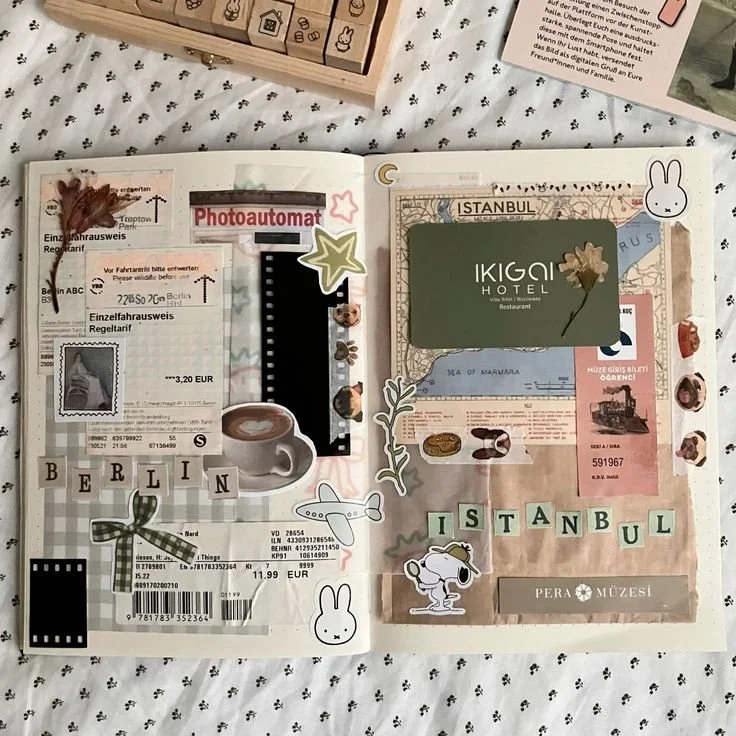Guide to Junk Journaling: Turning Everyday Scraps Into Art
Written By: Jacqueline Rappa
Junk journaling is an original and unexpected way to express yourself, using everyday scraps and keepsakes as a reflection of your life and personality. It’s a low-pressure, high-reward activity that encourages you to embrace imperfections and make something sentimental out of the seemingly mundane. Whether you’re new to the concept or looking to refine your approach, here’s a comprehensive guide to getting started.
1. Nothing is Trash
One of the most liberating aspects of junk journaling is the idea that “nothing is trash.” Movie tickets, clothing tags, receipts, or even bits of wrapping paper—all these items hold memories and tell a story about your daily life. When you incorporate these pieces into your journal, you’re essentially creating a tangible scrapbook of who you are. Start by saving items that catch your eye or evoke a specific memory. Keep a folder or box to collect your clippings, so you always have materials ready for your next journaling session.
2. Set a Topic
If you prefer a more structured approach, center your journal entry around a specific theme. This allows you to curate your bits and pieces with intention and purpose. For example, embrace seasonal themes by incorporating colors, textures, and items that evoke their essence. Think autumn leaves, spring flowers, or summer concert tickets. You can also organize your pages around special occasions and holidays. Make a Valentine’s Day entry with chocolate wrappers, handwritten notes, or cutouts of red and pink outfits from magazines. Add a personal touch by dedicating a page to your favorite cafe or a memorable trip by using items like coffee cup sleeves, maps, or boarding passes. Themes can spark thought-provoking design and help you view everyday items in a new light.
3. Don’t Overthink It
The beauty of junk journaling lies in its freedom and lack of rules. Your pages don’t have to look “perfect” or even make logical sense. Start by layering items, experimenting with layouts, and cherishing the eclectic nature of the process. Over time, you might develop a more refined style, but there’s no rush. Focus on enjoying the act of creating rather than achieving a specific outcome. Remember, the imperfections often become the most cherished elements.
4. Invite Friends
Junk journaling can be a fun, shared experience. Hosting a journaling night with friends is a unique way to bond, share ephemera, and inspire each other. Ask everyone to bring their magazines and craft supplies. You’ll be amazed at the artistry that flows when ideas and materials are exchanged. You could even set a group theme for the night or create collaborative pages to commemorate the occasion.
Additional Tips for Junk Journaling Success
● Tools and Supplies: While junk journaling celebrates using what you have, a few basic tools can elevate your experience. Keep scissors, glue sticks, washi tape, and markers on hand for quick and easy assembly.
● Repurposing Items: Think outside the box. Use fabric scraps, pressed flowers, shopping bags, or old postcards to add depth and variety to your pages.
● Storage Solutions: Organize your materials by type or theme for easier access. Small bins, envelopes, or folders work well.
● Experiment with Techniques: Try layering, folding, or creating pockets in your journal to add interactive elements. Paint or doodle to enhance your pages.
Junk journaling is more than just a creative outlet; it’s a way to celebrate the little moments, reflect on your experiences, and turn the fragments of ordinary days into a one-of-a-kind masterpiece. So gather your scraps, start gluing, and let your vision come to life in whatever way feels most natural to you.
